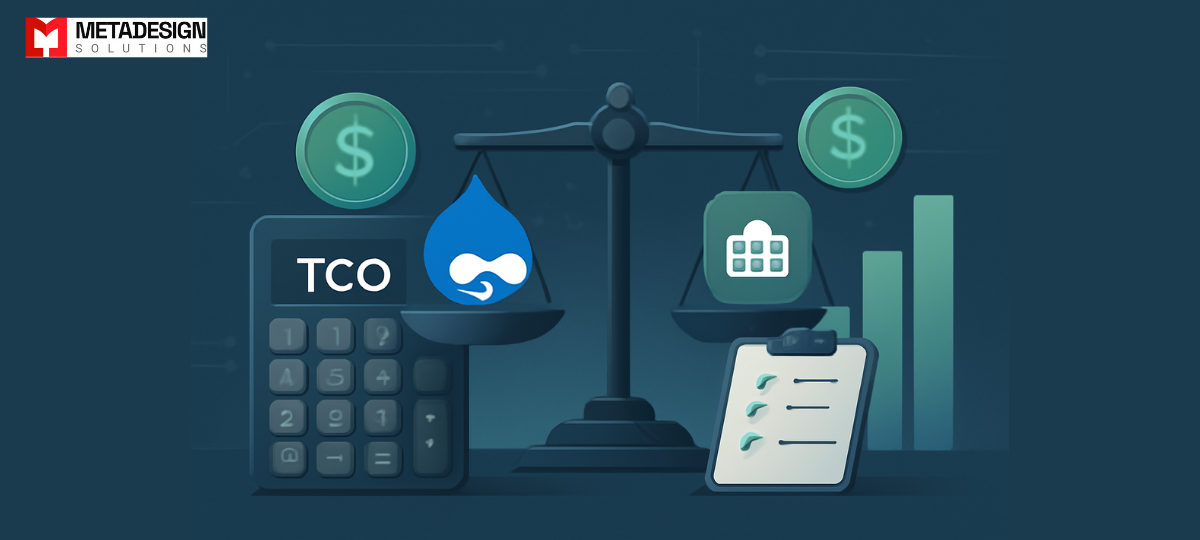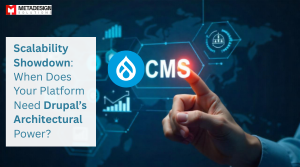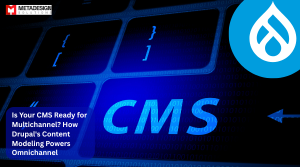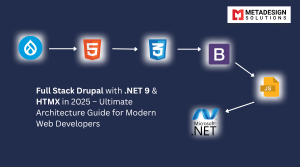In today’s digital landscape, choosing the right content management system (CMS) is a critical decision for businesses looking to scale their online presence. For executives, the financial implications of this choice can significantly impact both short-term budgets and long-term strategic goals. The Total Cost of Ownership (TCO) is an essential factor to consider, but often, it’s not as straightforward as it might seem.
In this post, we’ll break down the TCO of two key CMS options: Drupal, an open-source CMS, and proprietary CMS solutions that require licensing fees and ongoing vendor contracts. We’ll explore how Drupal can provide substantial cost savings, greater flexibility, and reduced risk of vendor lock-in, all of which can benefit the bottom line in the long run.
1. Licensing Costs: The Hidden Expense of Proprietary CMS Solutions
When it comes to proprietary CMS solutions, one of the biggest financial burdens is the licensing cost. These CMS platforms typically require annual or perpetual licenses, which can range from a few thousand to tens of thousands of dollars, depending on the size of your organization and the features you require.
Drupal, on the other hand, is completely free to use. As an open-source CMS, there are no upfront licensing fees, allowing you to avoid the significant ongoing costs associated with proprietary solutions. For businesses on a tight budget, this can result in immediate cost savings and a more flexible allocation of resources.
However, while Drupal may appear to be the more cost-effective option upfront, the TCO analysis should also take into account other costs such as development, maintenance, and hosting.
2. Development and Customization Costs: A Flexible Platform with Lower Long-Term Investment
Both Drupal and proprietary CMS solutions require initial development and customization to meet specific business needs. This can involve hiring developers, designers, and technical consultants. While proprietary CMS platforms often come with an out-of-the-box solution, they may not always provide the level of customization required for your unique business needs.
Drupal, by contrast, offers unmatched flexibility for customization. Thanks to its modular architecture and a vast library of community-driven modules and themes, developers can tailor the platform to your exact specifications. This flexibility means that businesses can avoid costly custom-built features typically required with proprietary systems.
Moreover, because Drupal is supported by a large, global community of developers, you can often find a solution to your needs without having to rely on a single vendor. This drastically reduces vendor lock-in, a common issue with proprietary CMS solutions, where you are tied to a specific provider for ongoing updates, maintenance, and support.
Calculate Your Platform's Real 5-Year ROI
Stop paying licensing fees that inflate TCO. Start investing in a long-term, vendor-independent platform solution.
3. Support and Maintenance: A Community-Driven Advantage
With proprietary CMS solutions, businesses typically pay for support and maintenance contracts. These contracts can be expensive, especially if your site experiences high traffic or requires frequent updates. Additionally, proprietary solutions are often less flexible when it comes to adapting to new technologies or meeting the evolving needs of your business, resulting in higher long-term maintenance costs.
In contrast, Drupal’s open-source model offers a significant advantage. The platform is supported by a global community of developers, designers, and enthusiasts who contribute to constant updates, security patches, and new features. While you may still need to hire Drupal developers for specialized tasks, the availability of community support can greatly reduce your reliance on costly vendor support contracts.
For example, Drupal’s robust security features are continuously updated by the community, ensuring that your site stays protected without the need for expensive third-party services.
4. Vendor Lock-In: Avoiding the Long-Term Costs of Proprietary Solutions
One of the most significant hidden costs of proprietary CMS solutions is the risk of vendor lock-in. With proprietary platforms, businesses are often locked into a specific vendor for critical updates, support, and even content migrations. If your business needs to switch CMS providers, you may face high costs and complex data migration processes.
With Drupal, vendor lock-in is not a concern. Since the platform is open-source and based on widely-used web technologies, businesses can easily migrate to different service providers if needed. Whether you’re upgrading your hosting, moving to a new design agency, or changing development partners, the transition is typically smoother and more cost-effective.
Additionally, businesses can self-host Drupal or choose from a wide range of hosting providers, providing greater control and flexibility over where and how the site is hosted.
5. Long-Term Financial Benefits: Lower Total Cost of Ownership with Drupal
When analyzing the TCO of both Drupal and proprietary CMS solutions, the long-term savings offered by Drupal become clear. While proprietary solutions often come with high initial licensing and support costs, Drupal’s zero licensing fees, customizability, and community-driven support make it a highly cost-effective choice for businesses that want to avoid hidden expenses and vendor lock-in.
Moreover, because Drupal is scalable and adaptable to the ever-changing digital landscape, businesses can avoid costly re-platforming efforts in the future, making it an excellent long-term investment.
Conclusion: Is Drupal the Right Choice for Your Business?
For executives focused on maximizing ROI and minimizing hidden costs, Drupal development services is a compelling choice. While proprietary CMS solutions may seem like an easy option due to their out-of-the-box features, the long-term TCO—when factoring in licensing fees, vendor lock-in, and ongoing support costs—can be a significant drain on resources.
On the other hand, Drupal’s open-source nature provides businesses with greater flexibility, a supportive community, and no upfront licensing fees, all of which can reduce the overall TCO and contribute to the financial health of the business in the long run.
If you’re looking to cut costs and future-proof your CMS solution, Drupal is the clear winner.
Relevant Hashtags:
#TCO #Drupal #ProprietaryCMS #ITStrategy #ExecutiveFinance #TotalCostofOwnership #CMS #OpenSource #CostSavings #EcommerceDevelopment #EnterpriseWebDevelopment #WebPerformance #DrupalDevelopment #CMS #WebScalability #DrupalSolutions



